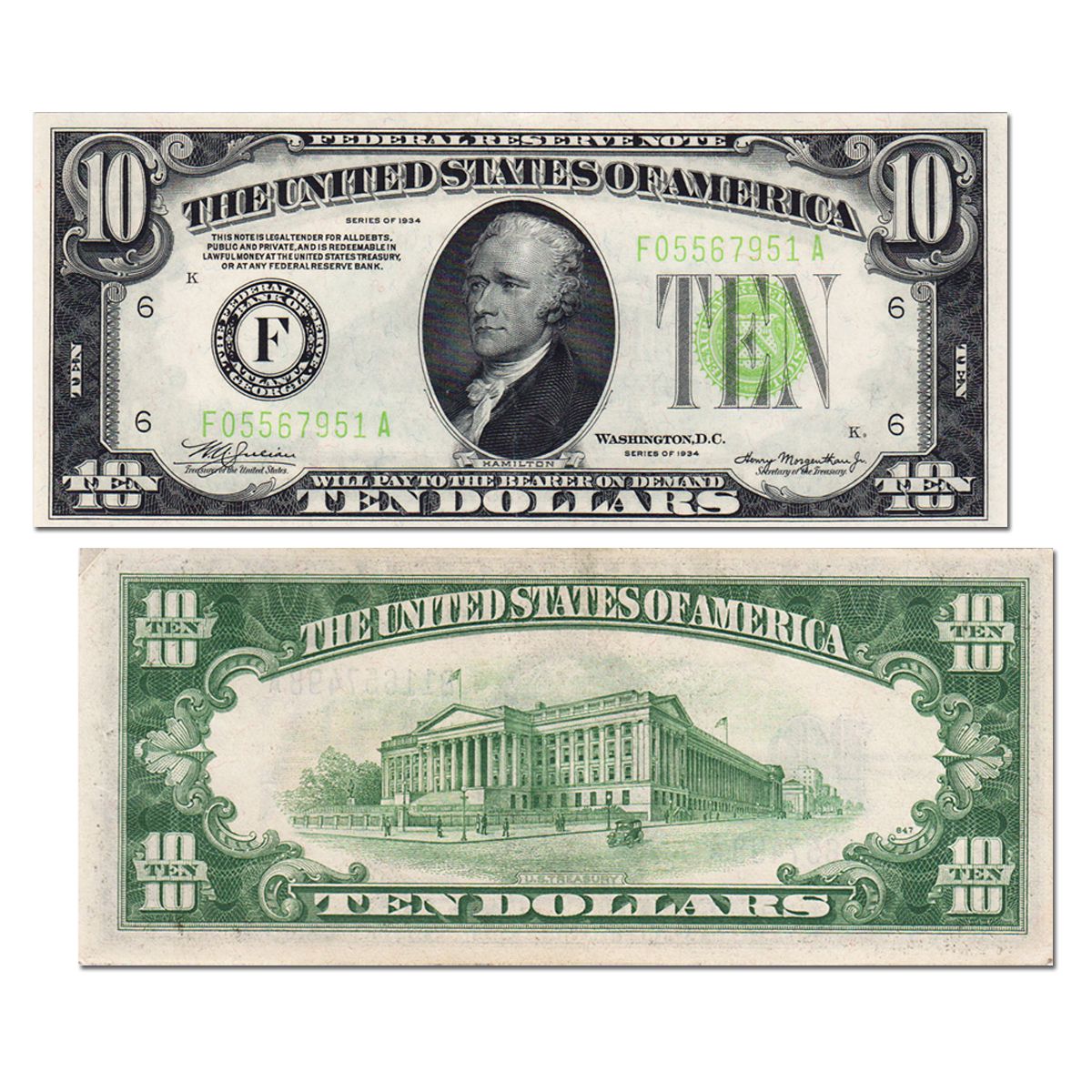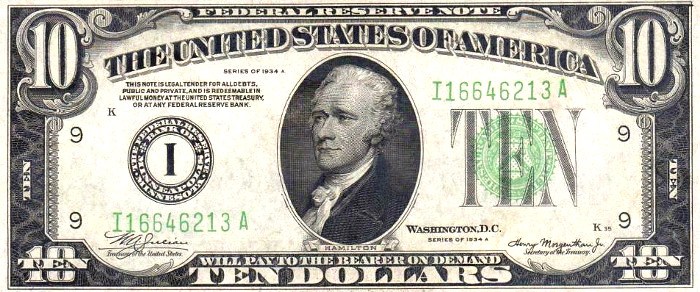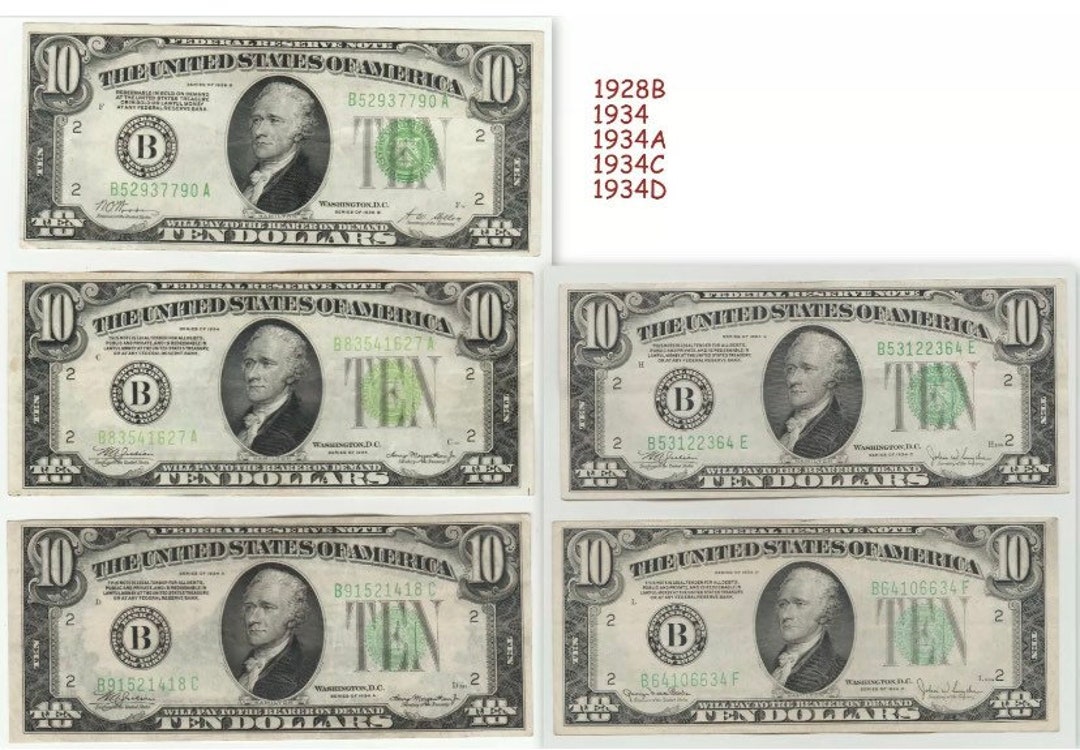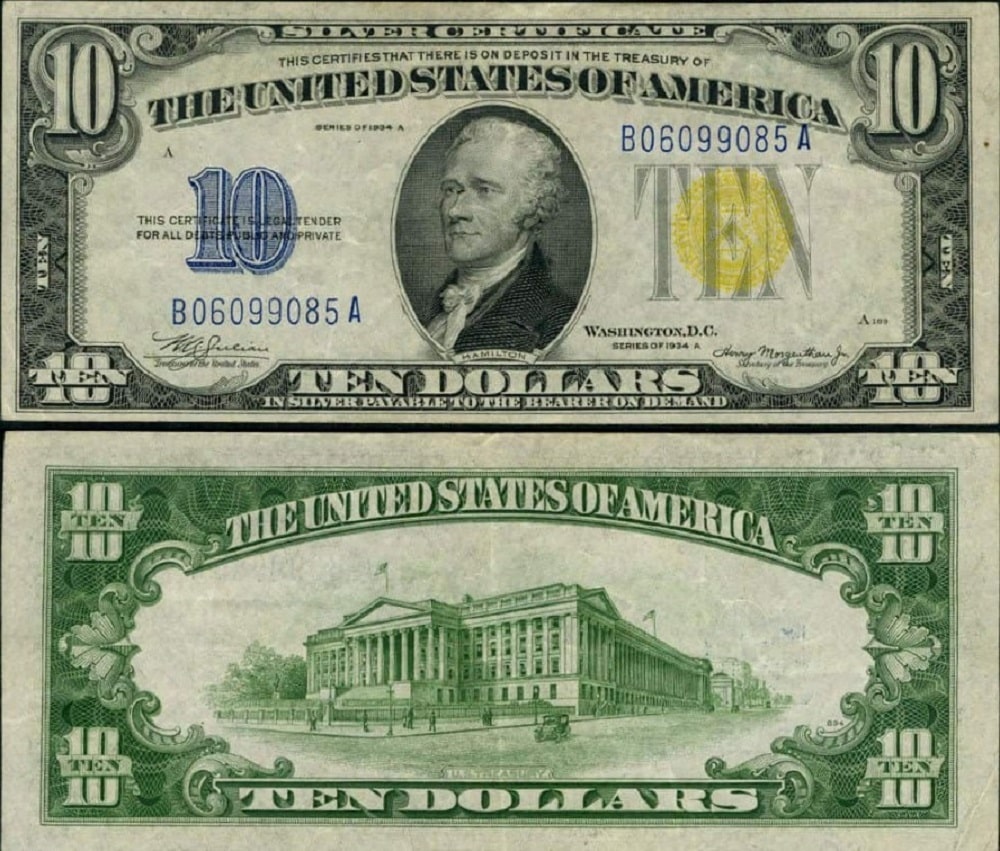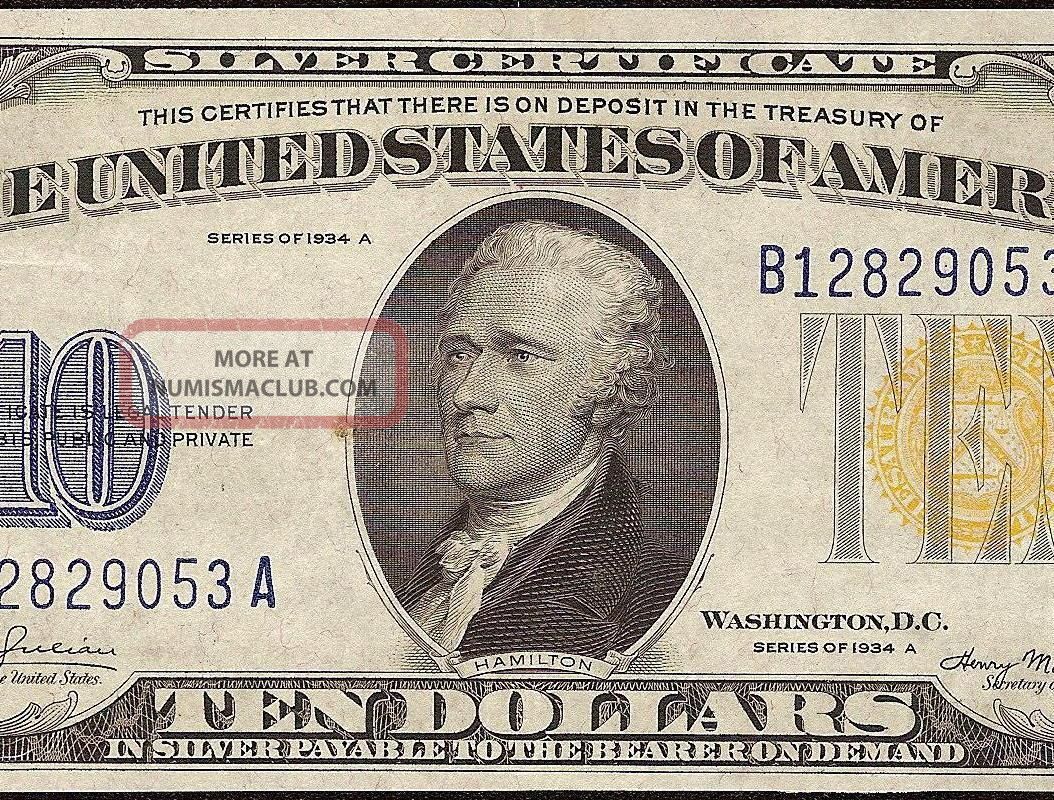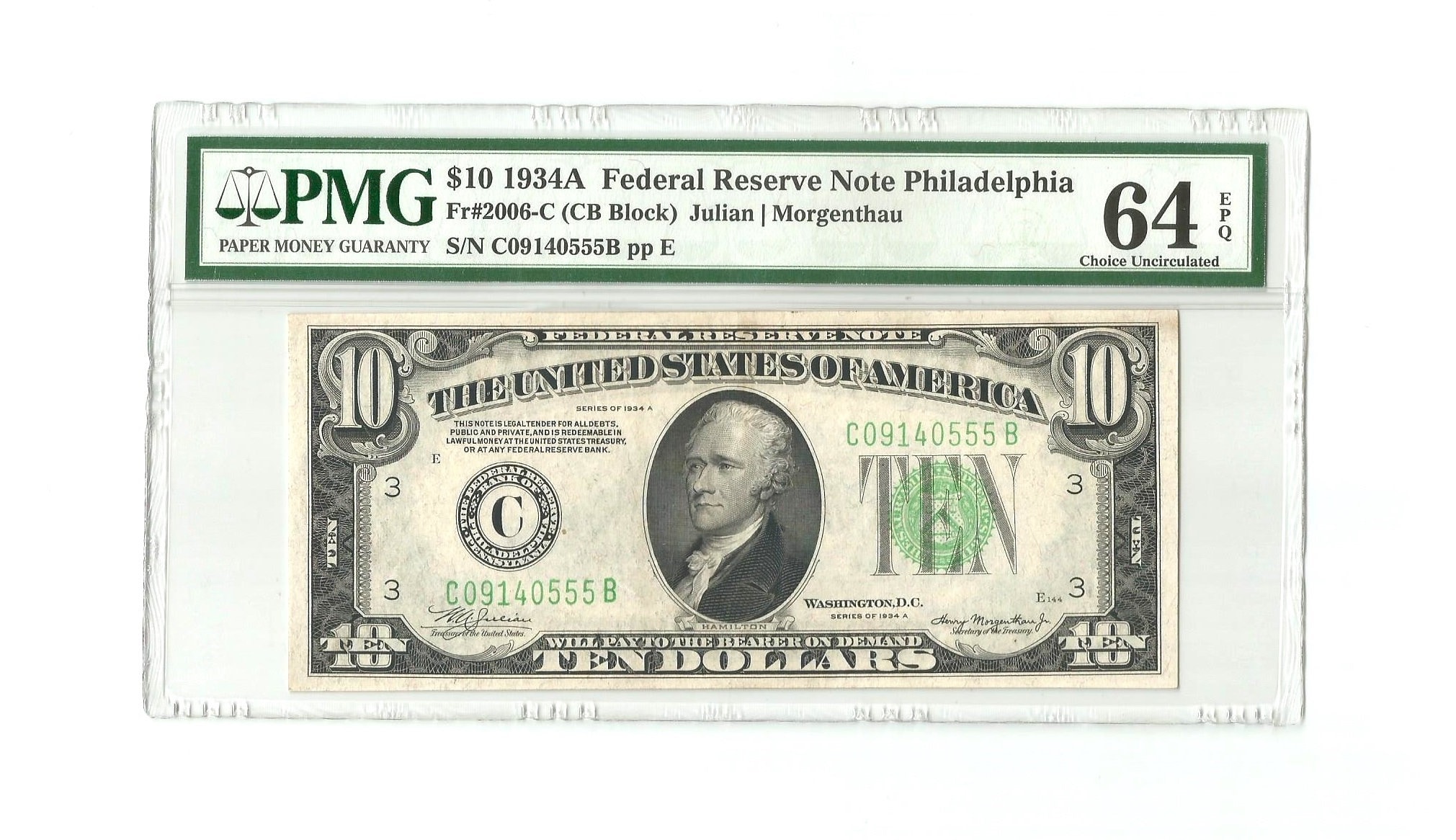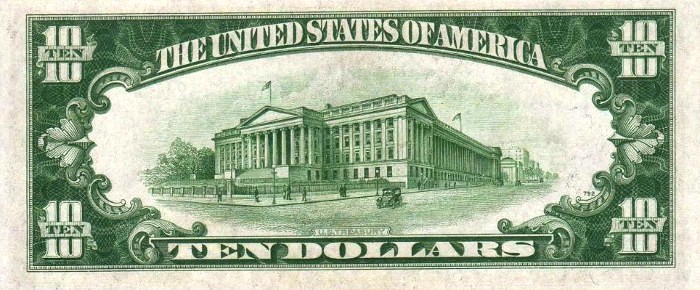1934 A Series 10 Dollar Bill

Imagine holding a piece of history in your hands. The paper feels crisp, aged, yet remarkably resilient. A portrait gazes back at you, a symbol of an era defined by resilience and reform. It’s a 1934 Series A $10 bill, a tangible connection to a pivotal moment in American history.
This seemingly ordinary piece of currency represents more than just its face value. The 1934 Series A $10 bill is a fascinating window into the economic and political landscape of the Great Depression and the early years of Franklin D. Roosevelt's New Deal. Its design, printing, and survival tell a compelling story of a nation grappling with hardship and striving for recovery.
The Great Depression and the Need for Change
The 1930s were a period of immense economic hardship for the United States. The Great Depression, triggered by the stock market crash of 1929, left millions unemployed and countless businesses bankrupt. Banks failed, farms were foreclosed upon, and the nation faced unprecedented levels of poverty.
In this environment of despair, Franklin D. Roosevelt was elected president in 1932. He promised a "New Deal" for the American people, a series of programs and reforms designed to alleviate suffering and restore prosperity. The 1934 Series A $10 bill is inextricably linked to these efforts.
The Design and Features of the 1934 Series A $10 Bill
The $10 bill of this era features a familiar face: Alexander Hamilton, the first Secretary of the Treasury. His portrait, based on a painting by John Trumbull, occupies the front of the bill. The engraving provides a sense of stability and trust, perhaps deliberately intended to reassure a shaken nation.
On the back of the bill is the U.S. Treasury Building, a symbol of the nation's financial strength. The building’s solid architecture is another attempt to inspire confidence. It signifies that the government stands behind the currency.
Several key features distinguish the 1934 Series A $10 bill from earlier or later versions. The most prominent is the use of a Federal Reserve Seal and serial number, indicating which Federal Reserve district issued the note. The “A” in the series designation signifies that this was the first series issued under the new regulations and printing processes related to the economic recovery efforts.
The Federal Reserve System and its Role
The Federal Reserve System plays a critical role in the creation and distribution of U.S. currency. Established in 1913, its primary purpose is to regulate the nation's money supply and credit conditions.
During the Great Depression, the Federal Reserve faced immense pressure to stabilize the banking system and stimulate the economy. The issuance of currency like the 1934 Series A $10 bill was a key part of this effort. It provided a medium of exchange and helped to restore confidence in the financial system.
Printing and Production
The Bureau of Engraving and Printing (BEP) is responsible for producing all U.S. currency. The process involves intricate engraving techniques and specialized printing presses.
Each bill goes through multiple stages of printing and inspection. This ensures the quality and security of the currency. The 1934 Series A $10 bills were produced in large quantities to meet the demands of a recovering economy.
Variations and Collectibility
Within the 1934 Series A $10 bills, there are variations in the signatures of the Treasury officials and the Federal Reserve district seals. These variations add to the collectibility of the bills.
Collectors often seek out bills in pristine condition, with crisp paper and no signs of wear. Errors in printing, such as misaligned printing or ink smudges, can also increase a bill's value. The value of a 1934 Series A $10 bill ranges from a modest sum for well-circulated examples to hundreds or even thousands of dollars for uncirculated or rare specimens.
The signatures of the Treasury Secretary and the Treasurer of the United States also contribute to the collectability of the bill. Different combinations of these signatures appeared on the 1934 series, and these distinctions influence a bill's rarity and value.
The Significance of the "A" Series
The designation "Series A" indicates the first series of notes issued under certain regulations or design changes within a particular denomination and year. In the context of the 1934 $10 bill, "Series A" might reflect adjustments made in response to economic conditions or specific policies enacted during the Roosevelt administration.
Identifying and understanding these serial designations provides clues about the historical context of the currency. It helps us understand the policies behind them.
Preserving History: Care and Handling
If you happen to own a 1934 Series A $10 bill, proper care and handling are essential to preserving its value and historical significance. Store the bill in a protective sleeve or album to prevent damage from folding, moisture, or sunlight.
Avoid cleaning the bill, as this can damage the paper and reduce its value. Handle the bill with clean, dry hands to prevent the transfer of oils and dirt. The goal is to maintain its original condition for future generations.
The Enduring Legacy
The 1934 Series A $10 bill is more than just a piece of currency. It's a tangible reminder of a challenging chapter in American history. It represents the resilience of the American people and the efforts to overcome adversity.
Holding this bill connects us to the past. It reminds us of the importance of sound economic policies and the enduring value of hard work and determination. It’s a small piece of paper, but it carries a powerful story.
So, the next time you encounter a piece of historical currency, take a moment to appreciate its story. Consider the era in which it was created and the challenges it represents. These old bills are a window into the past, offering valuable lessons about the present and the future. They remind us that even in the face of adversity, the American spirit endures.
